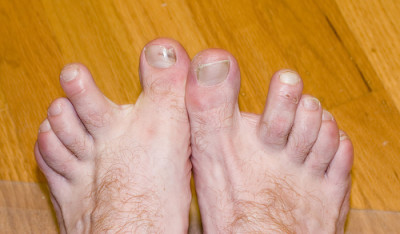
Athlete's foot, also known as tinea pedis, is caused by the fungal infection known as tinea cruris
This condition occurs because of improper foot care and footwear, as well as poor personal hygiene practices. When the symptoms of athlete's foot occur, it may be difficult to treat because it can spread from one patient to another and cause infections in other parts of the body.
The fungal infection can spread from person to person via scratching and rubbing the skin. To treat the spread of fungus, make sure that bathroom surfaces are cleaned regularly and that foot linens are always dry before using. Do not wear wet or damp shoes or sandals when going outdoors. Keep shoes or socks in dry storage rooms away from direct sunlight so that the fungi cannot grow on them.
When the symptoms of fungal infection appear, you need to know what you need to do. The first thing to do is to consult a doctor. In case there is a more serious medical condition, you may need to see a specialist to get your feet tested. Once the test has been done, you can have a proper diagnosis of your fungal infection and appropriate treatment. Once your symptoms are properly diagnosed and treated, your physician will prescribe the appropriate medicine or treatment.
You will find different treatments for athlete's foot, depending on the type of fungal infection. These include ointment, cream, oral tablets and even surgery. If your fungal infection is more severe than the usual ones, you may have to seek help from a dermatologist or podiatrist. However, it is best to seek immediate care and treatment to avoid secondary infections. In the meanwhile, make sure that you do not scratch or rub the affected area further.
If you are diagnosed with a sports foot, change your shoes immediately and take steps to prevent the spread of the fungal infection. Cotton socks instead of polyester will keep your feet dry. It is important to dry your feet thoroughly after bathing. The most common ways to dry and heal an athlete's foot are with foot creams and ointments.
An athlete's foot can also be treated by regularly cleaning the affected area with warm water. and antibacterial soap. The infected area should never be wet. If you do take some of these medicines, do not share them with other patients.

Apart from simple foot care, you should also avoid overly tight shoes
Tight shoes make it difficult for your feet to breathe and breathe, which can cause irritation. Wearing tight shoes that keep air out will also contribute to infection and discomfort. Wear comfortable socks and sandals whenever possible.
Following simple steps to eliminate athlete's foot can bring relief. All you have to do is take care of your feet and take care of them. If your condition seems severe or you are in constant pain, seek medical attention.
A good foot hygiene is an essential part of preventing athlete's foot. In fact, this is very helpful to prevent the spread of the fungus and infection. This will prevent you from having a fungal infection and a painful condition caused by athlete's foot. You can start by washing your feet thoroughly before dressing, and also you can clean your feet after you shower.
Foot creams and ointments can be used on your foot when you take a bath or shower. The foot cream should be applied at least 15 minutes before you go to sleep. Another way of making sure that your feet are healthy is by wearing cotton socks and avoiding shoes that have too much cleat. on the soles. These can help prevent the spread of the fungi.
When you have a fungal infection or an athlete's foot, the fungus will grow very fast. The infection will also spread easily by scratching and rubbing. If your feet are constantly wet, then the fungi will grow in the water. Therefore, keep your feet as dry as possible when bathing and do not put anything else on the feet or on the affected area.
Do not scratch with dirty feet. If your feet are always wet, the fungi can grow easily and infect other parts of the body. For prevention, wear socks and shoes made from cotton, wool or silk to keep your feet clean and dry. Wearing wet shoes, such as flip flops, can also spread the fungus to other parts of the body.
Leave a Reply